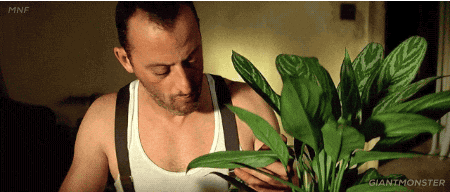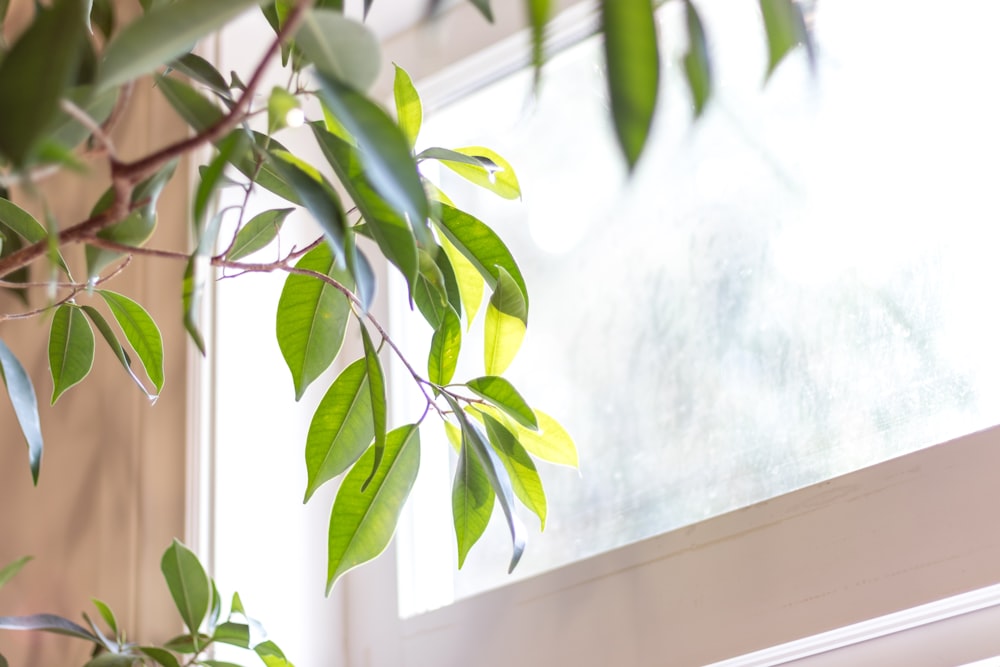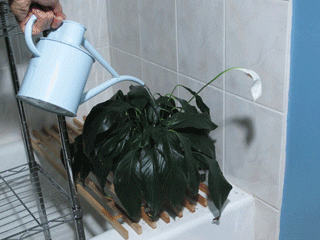As the seasons change, so too do your plants' needs. Just like us, plants need to be hydrated and avoid long hours of direct sunlight in summer. From spring to summer is a growth season for houseplants. By adjusting water, light, repotting, and changing their environment, we can ensure the plants are having the best summer ever.

Water
Plant care begins with proper watering, but overwatering is the leading cause of houseplant death. Before watering your plant, check the soil moisture with your finger if the top soil is dry or by using a moisture meter, some people can measure by the plant weight when lifting it. Summer heat and sun will cause water to evaporate from soil at much faster rates, it's recommended to water plants in early morning or evening when the sun is least strong to avoid water evaporation.
- Adding rocks on top of the soil will help retain moisture.
- Increase humidity by grouping similar plants together and mist them with filtered water , unless the plants like it hot and dry.
- Water your plants slowly to make sure the water is actually absorbed, and allow the plant to soak up excess water in a bowl for 10-20 after watering.
Read more about how to water your plants.
Light
Plants can get sunburned like people, it’s best to avoid direct hits of sunlight, or consider drawing a sheer curtain over the window especially for plants sitting in south and west-facing windows.
- Rotate your plants once a week so each side gets equal sun exposure and encourages balanced growth.
- Measure sunlight levels by placing your hand where your plants live, and if the shadow of your hand has crisp/clear edges, that means it's too strong for the plants.
- If some plants like to have more sunlight to grow, move them gradually under the sun to avoid sunburn as it will help them to acclimate. Start by placing them in the shadiest place you can find, then gradually move to a spot with some more light, but avoid direct sunlight.

Temperature & Humidity
Most houseplants come from tropical environments, so keep plants away from A/C units, the warmer & more humid, the better. Humidity levels of 50-60% are ideal for most tropical plants. Cacti & succulents prefer it hot & dry.
- If the room with plants gets very hot during the day, try to move them to another room that you would feel more comfortable in.
- Make sure to provide some air flow as it helps the plants to breathe.
- To provide additional humidity for tropical plants, mist them whenever the air feels dry, or place a saucer filled with water and pebbles under the plant (without touching the pot base) and the easiest way to get more humidity is by having a humidifier device.
Learn To Recognize Stress
Plants can visually let you know if something is wrong with them. Tropical plants' leaves will wilt or bend when they need water or if they are exposed to extreme heat. Signs for sunburn can show yellow or brown spots on the stems & leaves.
Boost your plants growth by fertilizing, if you did not fertilize in the spring, summer is your best chance. (Avoid fertilizing stressed plants and during heat waves).
Every plant has its own characteristics and personality, with time you will be able to know your plant better, so make sure to give your plant some attention in summer.
سقي نباتاتك بشكل صحيح هي الخطوة الأولى، لكن الإفراط في السقي هو السبب الرئيسي لموت النبات. قبل الري، استخدم إصبعك لمعرفة إذا كانت التربة جافة أو من خلال وزن النبتة. يتبخر الماء في التربة بسرعة أكبر خلال الصيف
يمكن أن تتعرض النباتات لحروق الشمس، فمن الأفضل تجنب التعرض المباشر لأشعة الشمس، أو ضع ستارة شفافة على النافذة للنباتات الموجودة في النوافذ المواجهة للجنوب والغرب
تأتي معظم النباتات المنزلية من البيئات الاستوائية، ضع النباتات بعيداً عن وحدات التكييف. تعتبر مستويات الرطوبة المثالية من 50-60٪ لمعظم النباتات الاستوائية. نبات الصبار والعصارة تفضل بيئة دافئة وجافة
يمكن للنباتات إظهار علامات إذا كان هناك مشكلة. تذبل أوراق النباتات الاستوائية عندما تحتاج إلى الماء أو عند تعرضها للحرارة الشديدة. يمكن أن تظهر علامات حروق الشمس مثل بقع صفراء أو بنية اللون على السيقان والأوراق








